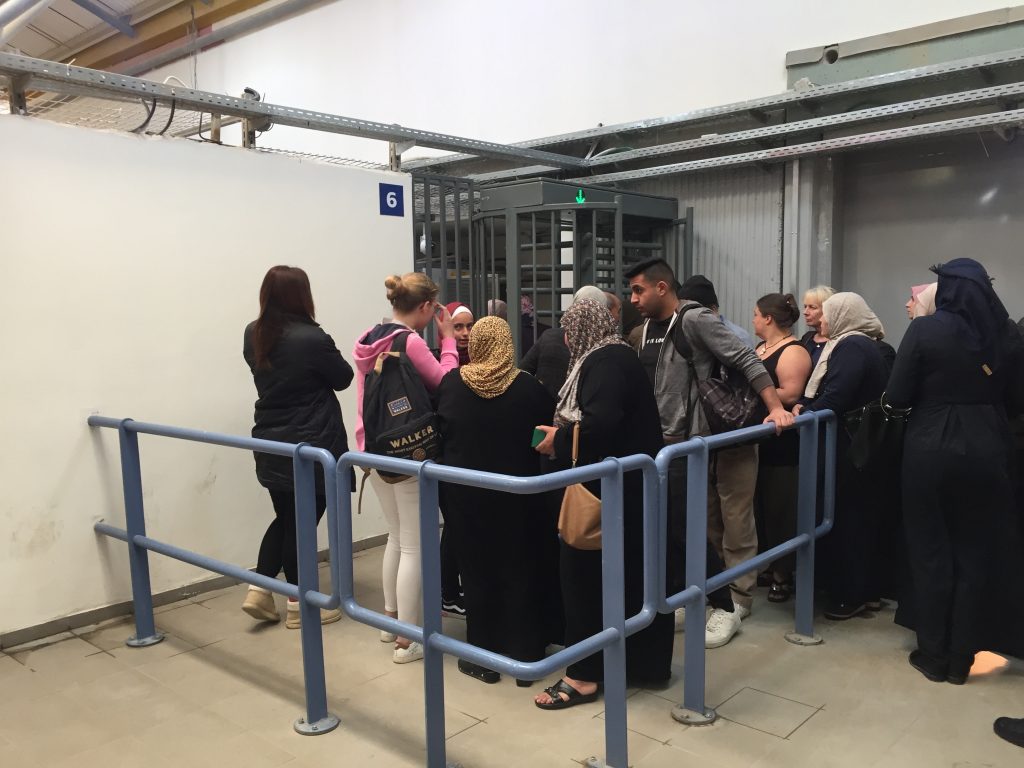High on a hill above Jerusalem, blue skies and an April breeze, it feels as though the whole conflict is laid out before us. The Mount of Olives opposite sits above the Palestinian area that is dotted with their black water tanks, a sign that some people in Jerusalem have difficulty getting enough water. To the left the Dome of the Rock rises above the Old City by Damascus Gate. Further still the Jewish houses of West Jerusalem and, of course, the separation wall, cutting off the road to Jericho and Palestinian towns like Abu Dis. Looking the other way we see the pristine Jewish settlements and the Arab villages side by side. In the distance the Dead Sea shimmers, beyond that is Jordan.
There is an uncanny peace up here, but peace is a long way off.

We were on a highly recommended 4-day tour of Bethlehem and the West Bank organised by Travel2Palestine and led by Martin Linton, the company director. Four of us from Kennington were joined by people from Hanwell, Pendle, Liverpool and Sheffield, each with their various twinning links.

We had started the day in Bethlehem. A walk along the separation wall to Checkpoint 300, a taste of what thousands of Palestinians go through on a daily basis. As we produced our passports at 8.30am, we could see the coffee cups lining the passageway, evidence of the thousands of Palestinians who queue here every morning as they wait to be allowed passage to work in Israel and the West Bank.

Once in East Jerusalem we dropped by the OCHA (United Nations Office for the Coordination of Humanitarian Affairs) headquarters for some useful reports and maps, then we were briefed by Zakaria Odeh from the Civic Coalition for Palestinian Rights in Jerusalem. Zakaria told us about the situation facing Palestinians in East Jerusalem, where 87% of the land is controlled by Israel with settlements increasing. The Palestinians living in the area are not considered citizens, rather as ‘permanent residents’ without full voting rights. He spoke of the increasing house demolitions and Arab families forced to demolish their own houses. In the Silwan/Al Bustan area, 1400 people are to be made homeless to make way for a ‘nature reserve’.

A short walk to Damascus Gate, where we met Abeer Zayyad for a tour of the old city. She was worried, having just heard that her cousin had been arrested by Israeli soldiers. Listening to Abeer, who grew up in the old city, it is clear recent events in Jerusalem have been just as tumultuous as its ancient history. She tells us that since 1948 the percentage of Christians living in Jerusalem has decreased from 40% to 2%. A walk along the Via Dolorosa, through the city to the Church of the Holy Sepulchre reached its conclusion on the rooftops between the old city and the Jewish quarter.

With the Dome of the Rock and the Wailing Wall behind her Abeer recounted some of the events of her childhood. Arrested frequently and imprisoned without charge Abeer told her story as the settlers passed by on their way to the Jewish quarter. “The first time I was held at gunpoint was when I was 9 years old.” Her stories were shocking for our UK-based group. The anger was fresh in her voice but there was humanity too. We made our way back through the old city, past the house where she grew up. On the way she was pleased to bump into her just-released cousin. A positive note to end on, but tomorrow would be another day.

